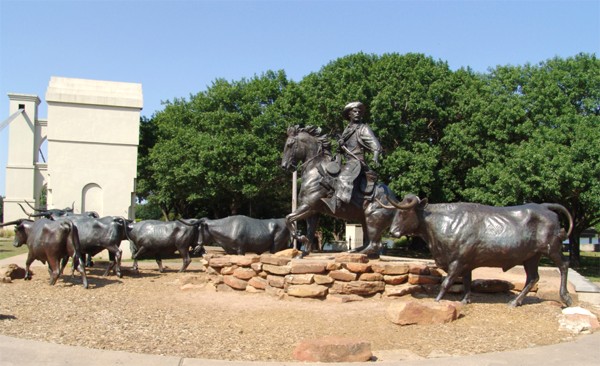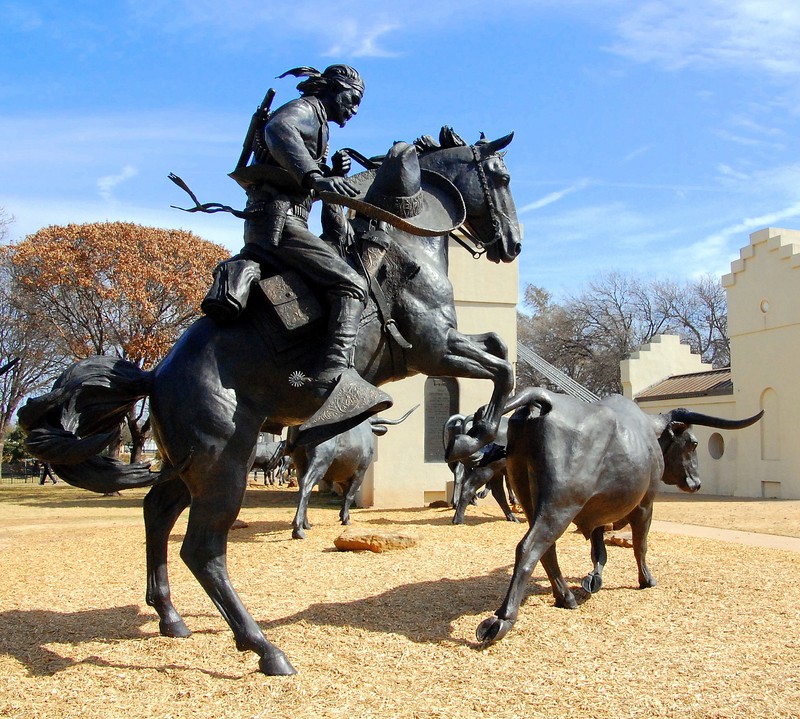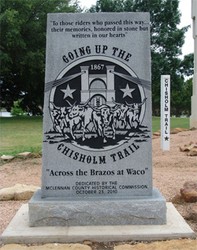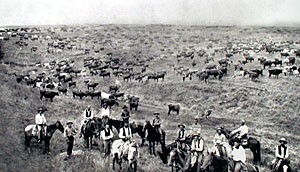Branding the Brazos Sculpture
Introduction
Text-to-speech Audio
Images
Part of the Branding the Brazos sculpture

Vaquero statue in the Branding the Brazos project

Chisholm Trail Marker

Cattle drive up the Chisholm Trail

Backstory and Context
Text-to-speech Audio
History of the Chisholm Trail
In the modern age, interstate shipping of goods and food is an everyday occurrence. Back in the mid-19th century, however, where individual states had greater legislative power before and immediately after the Civil War, shipping goods was much more tedious.
For example, one of Texas’s major potential assets in the 1850s and after the Civil War was its
In 1864, however, the Scot-Cherokee Jesse Chisholm found himself with many wagon loads of buffalo hides, and he and his cattle drive team had heard that the best market for the hides was in Wichita. Chisholm then blazed a trail up through Fort Worth and into Wichita, leaving deep tracks due to the overloaded wagons.
Three years later, in 1867, Kansas officials opened up a small section
Because of this trail, Waco was able to develop economically and socially, and Waco was continually connected with other major Texas cities such as San Antonio, Austin, Fort Worth, and Dallas. With the cattle drives combined with Waco’s cotton production, the city was able to set itself apart as a significant economic force. Unfortunately, the Chisholm Trail closed in 1885, mostly due to a strict 1885 Kansas quarantine law.1
Creation of the Branding the Brazos Sculpture
Beginning with a donation from local businessman Clifton Robinson and his wife, Betsy Robinson, the Branding the Brazos sculptures pay tribute to
Acclaimed sculptor Robert Summers was tasked with building the art piece, which consisted of three cowboys on horseback - one white, one Hispanic and one Black - and 25 longhorn cattle. The first pieces were unveiled near the base of the Waco Suspension Bridge in 2008, and the piece wasn’t completed until 2014. In total, the sculptures cost about $1.65 million. Nowadays, however, they serve as a reminder of Waco’s unique position in cattle drives. The sculptures, along with the bridge, remain as a popular tourist spot.2
